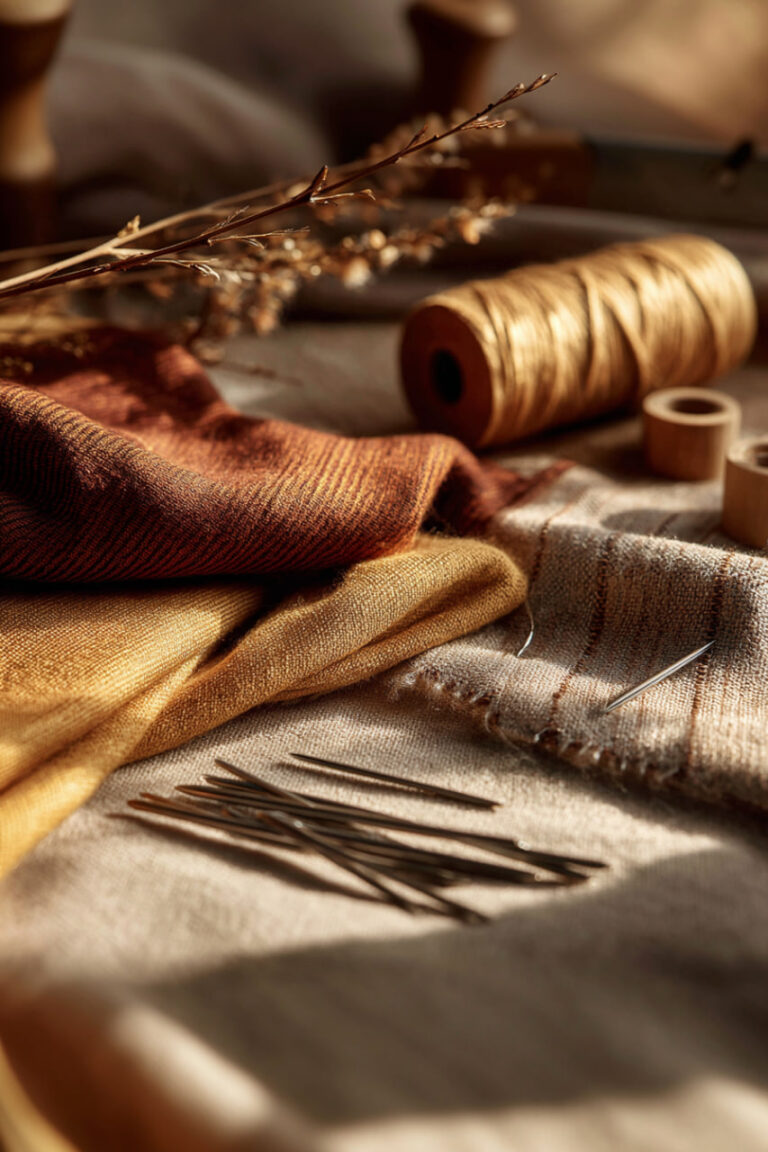
Types of Sewing Machines
Sewing machines have revolutionized garment-making, making the process faster,
more efficient, and accessible……….

Every handmade garment tells a story—but if your seams unravel before the final chapter, something went wrong. Behind every beautifully sewn piece is a foundation of strong stitching and well-chosen seam finishes. Whether you‘re sewing a dress, a totebag, or a pair of pajama pants, the type of stitch you use is just as important as the fabric you choose. Should you go with a straight stitch or a zigzag? Do you need to finish your seams—or are pinking shears enough? Here’s what you need to know to build strong, fray-resistant seams that last.
The straight stitch is the bread and butter of sewing. It’s the default on most machines and the first stitch most beginners learn. As the name suggests, it creates a line of evenly spaced, straight stitches—perfect for most woven fabrics and non-stretch garments.
✔ Sewing non-stretch fabrics like cotton, linen, or denim.
✔ Constructing seams where you want structure and stability.
✔ Topstitching for a clean, professional finish.
✔ Set the stitch length between 2.0 and 2.5 mm for seams. A longer stitch (3.0–4.0 mm) is better for basting or topstitching.
✔ Backstitch at the beginning and end of each seam to prevent unraveling.
✔ Use the correct needle for your fabric—sharp for wovens, ballpoint for knits.
But while the straight stitch is dependable, it isn’t flexible. If you use it on stretchy fabrics, the thread may snap when the fabric stretches. That’s where the zigzag stitch steps in.

The zigzag stitch creates a series of diagonal stitches that move from side to side. It’s ideal for sewing stretchy fabrics like jersey, knits, or swimwear—and it’s also your go-to for finishing raw edges to prevent fraying.
✔ Sewing stretch or knit fabrics.
✔ Reinforcing areas under stress (like crotch seams or underarms).
✔ Finishing raw edges of woven fabrics.


✔ For sewing seams on knits, use a narrow zigzag (width 1.5–2.5, length 2.0–2.5).
✔ For edge finishing, use a wider zigzag (width 4.0–5.0) to catch the raw edge.
✔ Always test on a scrap to find the right balance of width and length—too wide,
and the fabric may pucker; too short, and the fabric may stretch awkwardly.
Even a perfectly sewn seam can fray over time if the edges aren’t finished. The best
finish depends on your project, your fabric, and your tools.
✔ Zigzag stitch over raw edges – Quick and easy, especially for woven fabrics.
✔ Pinking shears – Great for lightweight fabrics, but not ideal for garments that will
see heavy use or frequent washing.
✔ French seam – Perfect for sheer or delicate fabrics; encases raw edges entirely.
✔ Flat-felled seam – Extremely durable; often used in jeans and men’s shirts.
✔ (serger) – If you have one, use it! Sergers trim and finish edges in
one go, giving a professional result.
Choosing the right seam finish can make the difference between a garment that lasts for years—or starts unraveling after one wash.
We’ve all been there: a seam that pops open after a single wear, or a frayed edge that just won’t stop shedding. Here are common reasons seams fail—and how to avoid them:
✔ Wrong stitch for the fabric. A straight stitch on stretchy material will break.
Always use a zigzag or stretch stitch for knits.
✔ No seam finish. Raw edges on woven fabrics will fray over time. Finish them with a zigzag, pinking, or serging.
✔ Too-short stitch length. Very short stitches can perforate the fabric like a paper
tear line. For standard seams, use 2.5 mm.
✔ Cheap thread. Low-quality thread breaks easily and causes tension issues.
Invest in good polyester thread for durability.
Mastering basic stitches isn’t glamorous, but it’s foundational. Choosing the right stitch type and seam finish ensures your handmade creations are as strong as they are stylish. Whether you’re sewing for fun, fashion, or function, start each project by asking: “Will this seam stand the test of time?”
Because in sewing, the difference between a wearable work of art and a wardrobe malfunction often lies in a single stitch.

Sewing machines have revolutionized garment-making, making the process faster,
more efficient, and accessible……….

Whether you're a seasoned seamstress or just threading your first needle, the setup of
your sewing machine is crucial to a smooth and frustration-free sewing experience………